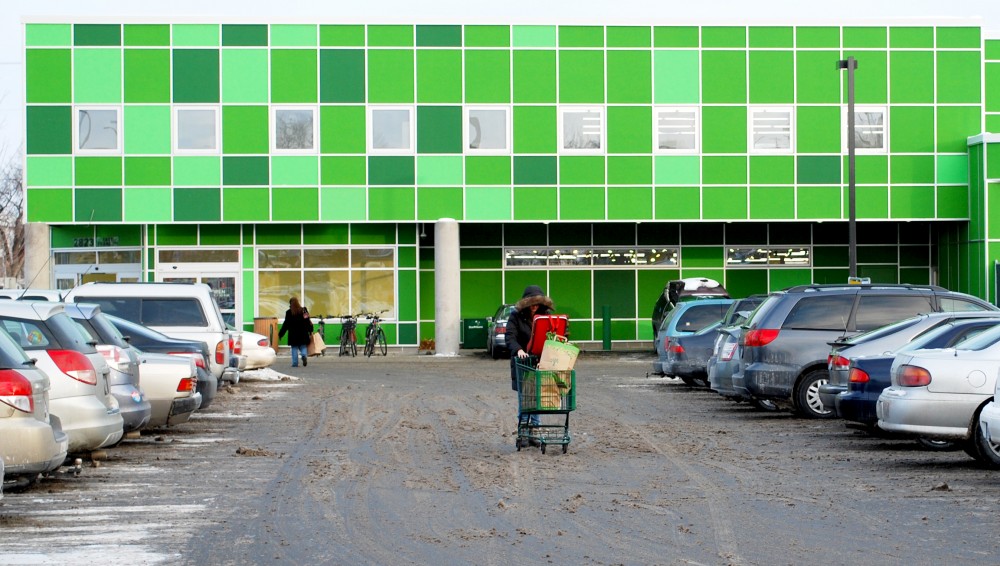At a time when many businesses are downsizing, the Seward Co-op Grocery and Deli has taken a step to create more than 50 jobs en route to opening at its new location. The new store is twice as big as the old one, and in spite of the larger size, it uses the same amount of energy as before. The expansion was on the table for about three-and-a-half years before it was finalized in 2008. On Jan. 8, the new store opened on 2823 Franklin Ave. East with more green features and organic, natural offerings. The Board of Directors decided the store needed to expand to better serve its members, marketing and member services manager Tom Vogel said, adding that members are one of the most important aspects of the store. Co-ops like Seward are member-owned and member-governed stores. Members are required to complete an application form and make a one-time $75 stock investment and receive a variety of benefits. They also get the opportunity to elect the Board of Directors and impact the future direction of the store. âÄúIn co-ops,âÄù Vogel said, âÄúmembers pool resources to bring about economic results that are unobtainable by one person alone.âÄù The new Seward Co-op is a candidate for Leadership in Energy and Environmental Design (LEED) Gold certification. If certified, the co-op would be the second grocery store in Minnesota, and third in the nation, to receive this status. The inside of the building is designed to allow the daylight to penetrate 70 percent of trafficked spaces in the store. High air quality was also maintained throughout construction, a consideration of LEED certification. In addition, the co-op is designed to capture and retain at least 90 percent of storm water and its white roof is designed to minimize heat-island effects, a phenomenon where buildings raise temperatures in areas around them. Even with the bigger store âÄî 26,500 square feet compared to the old 13,000 square feet âÄî it will not increase energy usage, and costs are not projected to increase due to the green features employed in the new building design. Aside from greener features, new departments were added and old ones expanded. The new departments include a meat and seafood department, new cheese counter, and a community and classroom space for meetings, workshops and cooking classes. Other departments such as the deli were expanded as well. It is four times the size of the former department. The innovation and the expansion process of the Seward Co-op was made possible by members and a number of other organizations. The 250 members of the co-op raised $1.5 million to help build the new store. With the collaboration of members, organizations and the Seward neighborhood, the co-op strives to sustain a healthy community with positive environmental impacts. Sean Doyle, general manager for the co-op, said in a statement the redesign goes along with the storeâÄôs core mission. âÄúThe new co-op is the result of a collaborative process that involved not only our members, but the Seward neighborhood and the broader community,âÄù Doyle said. âÄúThe result is a space that aligns with our mission to serve our members, shoppers and community and to be a crucial link to a more healthy and sustainable society.âÄù Unlike many conventional grocery stores, the Seward Co-op gives benefits to even part-time workers. Annie Easley, a dance sophomore at the University of Minnesota, has been a part-time employee at the store for over a year, working as a cashier and in customer service. She said she gets health care benefits and paid vacation, which workers at other places often do not receive. Easley said you earn membership after working 1,000 hours, which she did last year. Even though the store is surrounded by a number of immigrant communities, many residents are not aware of how the co-op functions. As a result, they commute to conventional grocery stores even when the co-op is only a block away. Habiba Osman, who lived in the Seward Tower West for two years, said even though the co-op is closer to her, she drives to Cub Foods because she doesnâÄôt know how the membership works, and never tried to learn about it because of the language barrier. Still, Vogel said, anyone is welcome to shop at the store, members and nonmembers alike.















